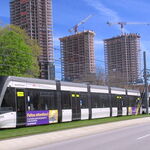The two biggest motivators for contracting out public services are a reduced public service payroll and reduced pension obligations.
I would actually prefer to see the end of private-savings tax incentives for retirement (RRSP etc.); (acknowledgment here, I do have one of these) and instead see an enrichment of OAS/GIS in its place.
I would also like see retirement age bumped to 70 for CPP/OAS/GIS (as it is increasingly throughout much of the developed world) and reinvest the savings in a higher benefit (the delay works out to a 40% increase).
I'll tie that back to the discussion in a moment, but to lay out the modelling, it looks something like this.
Right now CPP provides the typical person w/33% income replacement up to the limit; OAS adds another ~13% for a total of 46% income replacement with the rest assumed to come from private savings or pensions.
GIS tops you up to a certain point if you have no other income, and generally maxes out at ~$1700 in monthly income, which isn't very high.
My model before reinvesting the tax credit savings, would achieve CPP - 46% income replacement and OAS ~18.5% income replacement for a total of 64.5%.
The max income with GIS would bump up to $2,400 per month. Much healthier.
By pushing the RRSP money over to an enriched plan..........
One could reasonably achieve 46% CPP, 26% OAS for a total income replacement rate of 72%; with a further top up for single seniors; and you raise GIS to something like 3k per month max.
****
To tie that back to public sector pensions, in my reorganized scheme, you only leave in place the portion of the pension that would net civil servants an income greater than the above.
This would lower costs for both workers and the government substantially, and also lead to the wind down of the lower performing plans.




